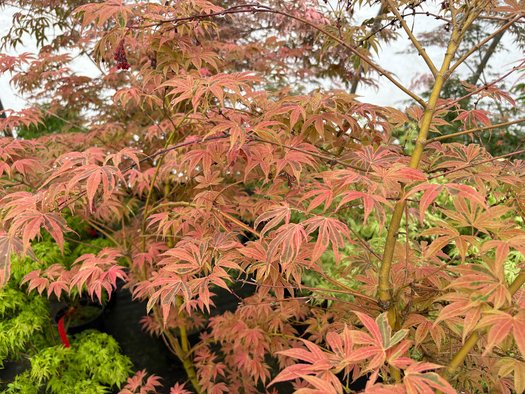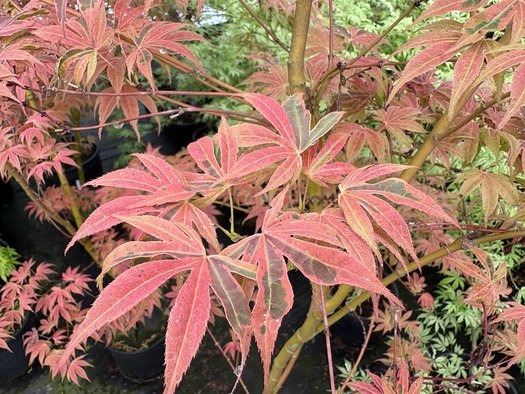Photo by Eastfork Nursery
Used with permission, all rights reserved
Buy Acer palmatum 'Geisha Gone Wild'
Also Known As
- Geisha Gone Wild Japanese Maple
Plant type
tree
size
- H: 6'-10'
- W: 4'-8'
planting zones
- 6a-9b
2 gallon bagged root ball | $111
Ships UPS, flat charge based on order total.
30 at Gossler Farms
1 gallon | $42.8
Avail in US except West Coast, HI/AK
Fewer than 2 at Maples N More Nursery
ONE Gallon | $42.8
Avail in US except West Coast, HI/AK
Fewer than 2 at Maples N More Nursery
#1 Container | $69.99
Buy button links to nursery site for checkout
Fewer than 20 at Conifer Kingdom
#3 Container | $159.99
Buy button links to nursery site for checkout
Fewer than 20 at Conifer Kingdom
Acer palmatum 'Geisha Gone Wild' plant details
Acer palmatum 'Geisha Gone Wild' is a broadleaf deciduous tree with green, pink, purple, variegated and white foliage. Flowers are not showy, but nurture a healthy ecosystem as wildlife habitat. Attracts beneficial insects and birds. Grows well with sun - shade and even moisture - regular water. Does well in average, rich and well-drained soil. A good option if you're seeking something humidity tolerant.
CHARACTERISTICS OF Acer palmatum 'Geisha Gone Wild'
- Plant type: tree
- Plant family: sapindaceae
- Foliage: deciduous green, pink, purple, variegated and white
- Mature size: 4 FT - 8 FT - wide, 6 FT - 10 FT - tall
- Uses: bonsai, container plant, fall color
GROWING CONDITIONS for Acer palmatum 'Geisha Gone Wild'
- USDA Zones: 6a - 9b
- Sun exposure: sun - shade
- Watering frequency: even moisture - regular
- Resistant to: humidity
- Soil needs: average, rich and well-drained
Nursery contributed plant descriptions

By: Gossler Farms

By: Conifer Kingdom

By: Forestfarm
Care and Receiving Your Tree

By: Eastfork Nursery
Garden photo gallery of Acer palmatum 'Geisha Gone Wild'
Gardening facts about Acer palmatum 'Geisha Gone Wild' plant
How to Grow Acer palmatum 'Geisha Gone Wild'
Sun Exposure
- sun - shade
Water Needs
- even moisture - regular
Soil Needs
- average
- well-drained
- rich
Special Situation
- humidity tolerant
Features
Foliage Color
- variegated
- white
- pink
- green
- purple
Wildlife
- beneficial insects
- birds
Foliage Season
- deciduous
Landscape groups by tags
Mailing List
Sign Up for updates on new plant arrivals and deals© 2010—2025 Plant Lust, LLC All Rights Reserved














